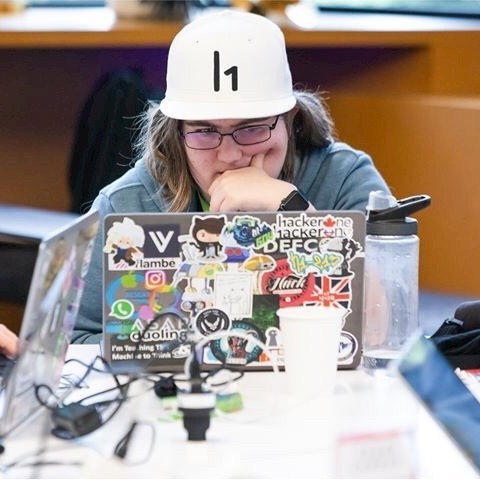Security regulations are often seen as the stuff of nightmares for security teams, complex, burdensome, and ever-evolving. But as the threat landscape grows more sophisticated and the stakes for organizations rise, regulations are no longer just compliance checklists. For heads of application security and Governance, Risk and Compliance (GRC) leaders, they are becoming strategic tools for driving resilience, trust and budget.
Drawing on a recent webinar, we compared the global landscape of security regulations, frameworks, and standards. Not by how intimidating they seem, but by the impact they have on real security outcomes. We looked at how well they raise organizational maturity, the kinds of tools and processes they require, the operational burden they introduce, and whether they drive meaningful cultural change rather than paperwork. Whether you’re navigating US, EU, or UK requirements or aligning with industry frameworks, understanding the strengths and limitations of each helps you shift from reactive compliance to proactive security leadership.
Why Regulation Matters (Beyond Just Compliance)
The debate over the value of regulation is never ending. Some worry that new rules will stifle innovation or create insurmountable hurdles, especially for smaller organizations. But fundamentally, regulation is a force for good. It compels organizations to implement controls that might otherwise be neglected, drives investment in security protecting both businesses and consumers from security threats. These controls could be anything from full security tools or just switching on a setting in a management console, depending on the requirements from the regulation.
For security leaders, regulation provides a defensible reason to invest in security before a breach occurs. It shifts the conversation from “Why should we spend on security?” to “How do we meet our obligations and protect our stakeholders?” In a world where the cost of doing nothing is low, regulation is often the only lever that moves the boardroom ahead of a major data breach.
What Makes a Good Security Regulation?
Not all regulations are created equal. To assess their effectiveness, we consider eight key criteria:
Strength of Protection: Does the regulation actually safeguard data and privacy?
Flexibility: Can it be implemented by organizations of different sizes and sectors?
Forward-Looking: Does it account for emerging technologies and evolving threats?
Clarity: Is the guidance understandable and actionable for security teams?
Resource Burden vs. Return: Is the compliance effort justified by the security gains?
Cultural and Ethical Alignment: Does it foster a security-first mindset?
Enforcement and Penalties: Are there meaningful consequences for non-compliance?
Practicality: Does it drive real operational change, not just paperwork?
With these in mind, let’s examine how major regulations and frameworks stack up, in our final ranking below.

Our final ranking from our webinar
The US Patchwork: High Burden but State and Industry Specific
The US regulatory landscape is a patchwork of federal, state, and industry-specific rules. Notable examples include:
FTC Safeguards Rule: Strong on consumer protection and clarity, but resource-intensive and limited in scope (non-bank financial institutions). Its risk-based approach is a model, but recent updates have introduced rigid controls that challenge smaller organizations.
NYDFS Cybersecurity Regulation: Applies to financial entities in New York, mandating multifactor authentication, vendor risk controls, and more. High operational overhead and limited flexibility make compliance challenging, especially for organizations juggling multiple frameworks.
SEC Cybersecurity Disclosure Rule: Focused on breach disclosure for public companies. While transparency is valuable, the rule’s ambiguity and timing requirements can disrupt incident response and create reputational risks.
HIPAA & CCPA: HIPAA set the baseline for healthcare privacy, but is now dated and limited in scope. CCPA is a step toward consumer privacy but applies only to certain California businesses, creating confusion and inconsistency.
Industry Standards (PCI DSS, SOC 2): PCI DSS is rigorous and globally recognized for payment security, but often outsourced due to its complexity. SOC 2 is table stakes for B2B, but its attestation process is more about paperwork than true security.
Key Takeaway: The US approach is comprehensive in some sectors but fragmented overall. Overlapping requirements increase the administrative burden, especially for organizations operating across multiple states or industries. The lack of a unified national standard leaves gaps and inefficiencies, but industry-specific regulation and standards does mean critical infrastructure like finance and banking is well protected.
Frameworks: The Gold Standard for Maturity
When regulation is absent or insufficient, frameworks fill the gap. Providing organizations with a path to change, with clear milestones, achievements and goals for security teams who don’t work in regulated environments. For organizations asking themselves where to start with cyber security these provide a blueprint for you to follow, without being too prescriptive on the how, and a focus on the why instead.
NIST Cybersecurity Framework: The “DNA” of many regulations, NIST offers flexibility and clear maturity steps. It’s broad and adaptable, but lacks enforcement “teeth.”
ISO 27001: The international standard for information security management. Certifiable and audit-ready, it drives continuous improvement but requires significant resources to implement.
Cyber Essentials (UK): A practical, checklist-based scheme for organizations of all sizes. Especially valuable for SMBs, it’s simple and actionable, though limited in scope.
Key Takeaway: Frameworks are invaluable for building security maturity and aligning with best practices. However, without regulatory enforcement, their impact depends on organizational commitment.
The EU Model: Comprehensive and Forward-Looking
The EU stands out for its unified, comprehensive approach across member states. Of note is that many of these regulatory frameworks like GDPR apply to organizations that operate in the EU, regardless of where they are located, creating a global reach that is difficult to simply ignore. The EU is quick to act to changes with new laws like the AI Act announced when LLMs were still in their relative infancy, but leaves little room for change and adaption as technology advances.
GDPR: The global benchmark for data protection. Its principles of lawfulness, transparency, and data minimization have influenced regulations worldwide. High administrative burden, but unmatched in scope and enforcement.
NIS2 Directive: Raises cybersecurity baselines for essential sectors, with clear definitions and strong penalties—including criminal liability for management.
DORA & PSD2: Focus on operational resilience and secure financial data, supporting open banking and rapid incident response.
EU AI Act & Cyber Resilience Act: Pioneering regulations for AI and digital products, emphasizing transparency, risk management, and secure-by-default design, where security is built into the product from initial conception, rather than being an afterthought.
Post-Brexit, the UK has charted its own course, blending EU-inspired frameworks with local innovation with FCA/PRA Operational Resilience: Mandates for financial firms to prevent and recover from disruptions, emphasizing business continuity. And the PSTI Act: The first UK law targeting consumer IoT security, requiring vulnerability management and transparency on device support.
Key Takeaway: The EU’s approach is holistic, prioritizing both consumer protection and operational resilience. While the compliance burden is significant, the clarity and consistency across member states make it easier for organizations to align security strategy with regulatory requirements. While the UK’s evolving regulatory landscape reflects a balance between comprehensive protection and practical implementation, with a focus on resilience and consumer safety.
Recommendations for Security Leaders
The most important step for any organization operating in a regulated environment is to use established frameworks to build a defensible, maturity-driven security program before regulation forces the issue. From there, here’s some good places to start:
Map Your Regulatory Landscape: Identify all applicable regulations and frameworks - don’t underestimate the complexity if you operate internationally or across sectors.
Prioritize High-Impact Controls: Focus on requirements that drive real security improvements, not just compliance for its own sake.
Leverage Frameworks for Maturity: Use NIST, ISO, or similar frameworks to build a security program that goes beyond minimum requirements.
Advocate for Clarity and Consistency: Engage with regulators and industry groups to push for clearer, more unified standards.
Prepare for the Future: Stay ahead of emerging regulations, especially in areas like AI and IoT, to avoid last-minute scrambles.
Security regulations can be daunting, but for security leaders, they are an opportunity to drive meaningful change. Advocating for security controls, with a clear justification as to the benefit of doing so. By understanding the strengths and limitations of each regulation and framework, you can turn compliance from a scary story into a strategic advantage building resilience, trust, and a culture of security that lasts. While also keeping your products, organizations and users safe and secure.
About
Semgrep enables teams to use industry-leading AI-assisted static application security testing (SAST), supply chain dependency scanning (SCA), and secrets detection. The Semgrep AppSec Platform is built for teams that struggle with noise by helping development teams apply secure coding practices.




